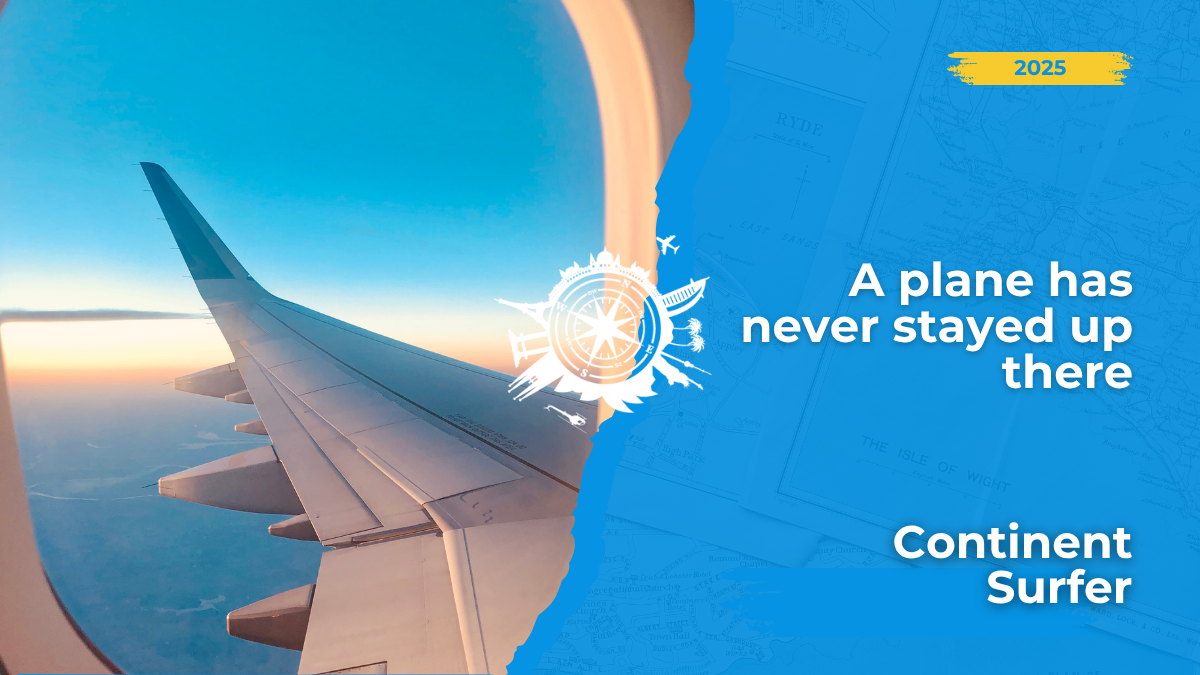A plane has never stayed up there
“A plane has never stayed up there” – My mom used to say that a long time ago, and she was so right! The thing is, how it lands also matters.
written by: andi – Continent Surfer
Statistically, flying is still the safest form of transportation. Yet, sitting in a metal cylinder hurtling along 10 kilometres above the ground, all sorts of thoughts can cross your mind. This article isn’t about air disasters; it’s about well-managed situations that can happen on any flight, with any airline. These are moments where safety was prioritised over speed and time. As they say where I’m from, “better safe than sorry.” Our usual principle still stands: take what’s useful and discard what’s not!
The Magic of Flying’s Discomfort
Living on one of the world’s most distant points from my home country, every trip back allows me to experience a multitude of flights. The discoveries aren’t limited to the airports (or cities) I pass through; the different aeroplanes and airlines also have a lot to offer.
The Aircraft
Personally, I prefer Boeing planes over the big ones—they seem quieter than the Airbuses. Not that I have any say in what we fly on! The flight attendants are always kind, helpful, and smiling. And they are firm. The state of the toilets on board, however, can be quite varied, especially towards the end of a 12-13+ hour flight. To my great surprise, on my last trip, the restrooms were almost perfectly clean even at the end of our journey. This was the case on all four intercontinental flights (all with the same airline), even though they were heavily used.
They Even Give You Food
After the exterior, let’s talk about the interior. I’ve often wondered if the food served on a plane depends on the departure airport, the airline, or both. I also wonder what makes food taste bland while in the air. I used to think that after flying two intercontinental trips in a row, then doing the same on the return a month later, the food would start to taste the same. But to my surprise, on my most recent journey, the meal on the last long-haul flight was still delicious and flavourful. And only a few weeks had passed between the outbound and return flights.

And They Take Care of Us, Too
Multi-stop journeys provide a basis for all sorts of comparisons, and can also lead to interesting or even unsettling situations. Here are a few examples from decades of my experience as a passenger—things you might encounter. They may not happen, but don’t be surprised if they do. And remember: delays or no delays, safety should always come first. A plane has never stayed up, but how it lands matters. With us.
Weather vs. Planes
Weather is a classic example of “man plans, God laughs.” It’s a definite external factor over which no one—not us, not the pilots, not anyone—has control. Here are some examples.
Fog
Ah yes, the great boogeyman. The early morning flight that was supposed to fly back with us to Budapest didn’t land here due to the fog. It landed in a nearby city. My phone came out, a message was sent: “Don’t come get me, we’re going to be late.” Luckily, the fog lifted in a few hours, the plane flew over from the neighbouring city, we took off, and we arrived safely, even if a few hours late.
Icy Runway
The plane took off on a one-and-a-half-hour journey early in the morning, but started circling over the destination city. We circled at least three times, then finally landed safely, one and a half hours late, exactly where we were supposed to. We were the first plane to land or take off that day. It turned out the delay was caused by an icy runway that took time to clear. I’d rather spend one and a half hours circling than the five-hour bus ride that would have awaited us if the plane had landed “one stop earlier.”
Wind
My local airport is situated between hills, which makes it one of the most difficult to land at. There was a flight that succeeded on its fourth attempt. And there was one that couldn’t and turned back. So the people who were supposed to fly out were left behind. Wellington, New Zealand, isn’t bad, either. Once, during a landing there, the wind changed direction. The plane, instead of touching down, pulled up its nose, made a 180-degree turn (the wind turbines shifted to the other side of the plane), and landed successfully on its second attempt.
Technology Intervenes — After All, a Plane Isn’t Human
While humans have no control over the weather, we do have control over the aircraft. And because of this, in my experience, airlines do everything they can to keep us safe. As much as they can.

Engines
Our plane arriving from Europe, which was supposed to take us back to Europe after its turnaround, already landed one and a half hours late. We boarded. We sat. We waited. The captain spoke, apologising for the delay. It was because of an engine problem that they had to take off with a backup plane. Now they had found something else wrong with the engine, so we would move to the side and wait, hoping the engineers could solve the problem.
Time passed, and we did the maths: we would definitely miss our one-hour-and-forty-minute connection. The captain announced: “We’re taking off with a two-hour delay.” But first, we would take on some extra fuel to make up for the lost time. We made up an entire hour! We had 40 minutes to transfer—and they really outdid themselves. They were waiting for us with a sign with our names, and they prepared a special route for us. We made it to our next gate at the other end of the airport in 30 minutes, including security and passport control. Ten minutes before boarding!
Why did the second intercontinental flight on our way home also take off late? You can guess! But it also arrived safely in the end.
Mechanics
We boarded in record time. We pushed back. We took off. Then, somehow, we got stuck at two thousand meters, circling. Time passed. The captain announced: “There’s a mechanical problem, we’re going to circle a little longer at a low altitude, and they’re trying to fix it.” Time passed, and the destination on the monitor switched to the departure airport. The captain spoke again. They couldn’t fix it. We were going back. The ground crew was trying to prepare another plane for us.
We landed after two hours of circling. It took another two hours for everyone to be herded onto the other plane. Everything went smoothly, and they demonstrated absolute professionalism. Finally, we landed at our destination four hours late, but safely. And with our luggage.

The Lesson?
Is the extra time spent on the plane tiring and uncomfortable? Yes. Is it worth it? I think so. Safety above all else.
Did you know?
Pilots eat different meals? This is a safety precaution. Pilots are often served different meals to reduce the risk of both of them getting food poisoning from the same food.

Like what we do?
If so, please support us, every little counts and is much appreciated!
You will help us to come up with useful information regularly, so please support us every once and a while or even monthly! Thank you!
Source(s):
Join the Continent Surfer community!
Subscribe to our newsletter and be the first to receive the latest news, useful tips, and exclusive offers!
Comment

